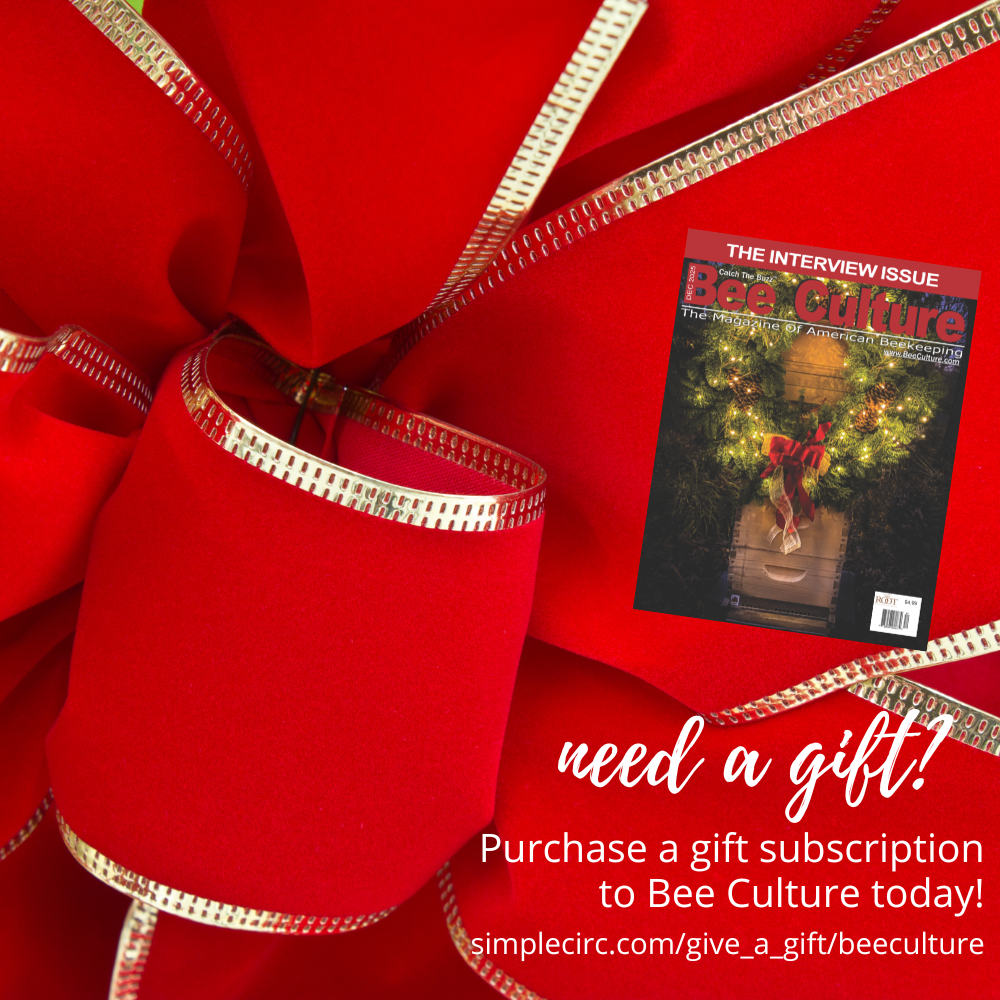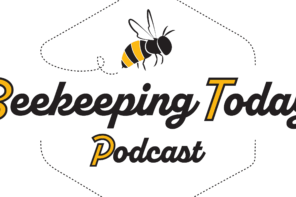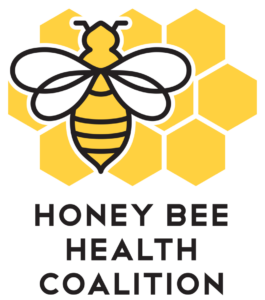Jan Is One Of The Movers And Shakers Of The Oregon State Beekeepers
by Dewey Caron
Jan Lohman and partner Vince Vazza run over 2000 colonies based in Hermiston, (eastern) Oregon. Jan is one of the movers and shakers of the Oregon State beekeepers. I interviewed Jan as the last of their 2264 colonies were coming off melon and buckwheat locations while they were completing fall preparations.
Jan describes their beekeeping advantage as attention to detail. They micro-manage, not seeking more numbers but more colony attention. Colonies with problems are fixed before they exit the bee yard. Describing beekeeping as “timing is everything,” they continually rework their colonies, attempting to keep ahead of the curve. They know most years they are likely to face a serious challenge, a truck turnover, heavy Winter losses, high mite pressure, loss of a pollination contract to another beekeeper undercutting their price, or some other potential setback. In as much as possible, their intensive manipulation and attention to colony detail allows them to quickly respond and rebound and survive until the next season.
Fall at Vazza Farms means pulling the last of their palleted colonies off pollination rentals of melon fields. Colonies are eight-frame, two standard deeps with two internal syrup feeders. Fall represents a time out for their bees. Colonies moved earlier to buckwheat on irrigated Eastern Oregon and Washington locations remain to end of bloom and then consolidated in either mustard fields planted as a cover crop or dessert rabbit brush sites, where bloom may last until November.
Most of their apiary sites are the same locations that go back to the early efforts by Vince to get to know growers in the region. Unlike many Oregon bees, their sites may offer some Fall flow for their bees. Otherwise, Fall management includes removing and extracting the last of the surplus, feeding three or more nutra-bee pollen patties plus a heavy syrup mix of cane and high fructose corn syrup. Most of the feeding and outside bee work needs be completed by end of October in Oregon.
Their bees will have a relatively short Winter. Winter brings windy, cooler conditions but relatively little moisture in Hermiston, east of the Cascade Mountain range of Oregon. It is, however, the most nervous time, relieved only when Jan sees their bees busily buzzing in California in February. It is a time for bee meetings, Oregon in November and the American Beekeeping Federation in January. It is time to finish the books for the company, paint boxes, repair equipment, get the trucks serviced and catch their breath.
Fall is for consolidating colonies with the best stock, seeking to minimize overwinter losses. All colonies are requeened annually by mid-June, part of the philosophy of anticipating in advance. Requeening is one of Jan’s favorite bee activities. Jan is really emphatic that young queens are their best insurance against heavy annual losses as their bees will soon face exposure to mites and bee diseases such as Bee PMS.
Younger aged queens are doubly appreciated, when they follow their bees to California in late January. Vazza Farms will transport 2000 colonies to CA almond pollination, along with colonies of other beekeepers. It will take six trailer loads to get them all to holding yards south of Sacramento by the end of January. There they feed syrup and protein and equalize them as they prepare colonies for movement into almond orchards from the holding yards.
Almond rental is the first of about a half dozen pollination rentals of Vazza Farm bees during the season. Some 80% of annual income comes from colony rentals for pollination, with 10% from honey (marketed to the Sioux Honey Cooperative) plus 10% from sales of bulk bees, brood frames and summer nucs.
Jan and Vince follow the last load of their bees to CA by end of January, living most of the first three months of the year in a trailer. In the holding yards, all colonies are intensely examined, fed, treated with Apivar, and equalized. The colonies will remain in California until mid/end March.
Like other beekeepers Jan and partner Vince have difficulty maintaining sufficient hive numbers. For Jan, the understanding of how Varroa mites affect her colonies, and keeping up with testing to help maintain low levels of infestation is part of keeping ahead of the curve.
They sell bulk bees and frames of brood as they pull colonies out of the almond orchards at end of bloom. Then their bees are back on transport trailers to return to the Columbia River basin of Oregon to holding yards adjacent to sweet cherries in Dalles, Oregon. The two to three weeks before cherry bloom is their busiest time as they will go through all of the colonies once again, checking on queens, equalizing, pulling frames for starting nucs and reducing the largest colonies to reduce swarming. Jan says her second favorite bee activity is pulling frames to make nucs. 300 to 500 four-frame nucs are sold to new and established beekeepers.
Following two weeks of cherry bloom, the bees next go to pear orchards further west along the Columbia in the Hood River area after being checked for queens and fed again. However others are readied to go back to eastern Oregon for blueberry and early melon pollination. Increasing blueberry acreage and attempts to market melons earlier through use of row tunnels (cold frames) is pushing up the need for colony numbers. Jan and Vince need to broker additional beekeeper colonies to meet the pollination demand for the cherries.
The melon growing area of the Hermiston area, their home base, has enjoyed steady growth where changes in melon production from seeded melons to the much loved refrigerator size hybrid melons of today. The colonies go onto the irrigated sites and stay for as long as three months until the end of bloom for cantaloupe, watermelons and honey dew production. Vazza Farms will eventually move about 1000 colonies to cucurbit pollination. The other half go to an irrigated area of central Oregon for carrot seed pollination. Both cucurbit and carrot seed crops are “hard” on bee nutrition and increasingly they are finding the value of feeding protein while the bees are in these sites.
Colonies are requeened and reworked before the Summer rentals before Fall completes their annual cycle with their bees back in the Hermiston area. Colonies will be manipulated and built back up to raise enough “fat” Fall bees on buckwheat, mustard and supplemented by sugar and protein feeding before their winter rest and January movement to California almonds.
Jan came to beekeeping later in life. Originally from Connecticut, she was raised on Amelia Island in Florida, then a sleepy backwater. She spent a year in Denver Colorado before landing in Hermiston, OR in 1978. There she had a chance to complete her undergraduate degree from the University of Eastern Oregon. Jan supported her studies with her pottery skills plus working in a local bookstore. Although she called herself ‘technically strong’, she did not see supporting herself with her pottery so upon graduation she bought the locally owned Hermiston Book Company, one of two book stores in Hermiston, where she had worked while in college.
Jan met Vince Vazza and they became friends. He would come into the bookstore occasionally to trade honey for books. When several mutual friends organized a New Year’s Eve Party, she invited Vince to join her for the New Year’s Celebration. Then Vince invited her to join him to “help strap bees” in preparation of his bees going to CA. Terrified but fascinated, the cool weather thankfully kept the bees behaved. Liking this initial exposure to bees, Jan offered to join Vince and his 1150 colonies pollinating almonds in California, on her vacation in March 1991.
She first had to buy books. Her choice was a stylish Italian model. Vince however thought the boots “not quite right” for bee work. He was right as Jan’s first sting was at the top of her boot. Jan switched to books somewhat more appropriate, if not quite as stylish, for the bee work. She was soon hooked with the nice weather, the gentle bees and bees busily buzzing among the lovely scented almond flowers.
When the bees came back to Oregon Jan tried to work two jobs – bees two to three days each week as Vince was having difficulty getting quality help + the book store. She found the book store needed full-time owner attention. With developing changes in book buying and uncertain future prospects of smaller book stores from competition such as Costco, Amazon, etc. She ended up deciding in favor of bees. So she sold the book store to partner full-time beekeeping with Vince. She has never regretted her choice.
Since, their hive number has doubled with the attention of the two partners to 2264 these days – enough to keep both of them busy. They now hire four full-time individuals, including Jan’s son Jason.
Jan, now in her 23rd year of full-time beekeeping still loves bee care. She has become very generous in giving back to the bee industry. She became active early in the Oregon State Beekeepers Association, serving as a regional representative for Eastern OR when George Hansen was President beginning in 1995. This was followed by three years of service as Secretary from 2003 through 2006. After a three year hiatus, Jan was elected President in 2010, a position she served three terms. (See: ).
During her term as an officer of OSBA, there were many changes occurring with bees. Pollination replaced honey production as the major income generator and of course tracheal and Varroa mites and their control became significant challenges. More recently, honey and pollination rental prices have moved upward, due largely to a dramatic increase in CA almond pollination prices in the mid-2000s. Jan strongly believes beekeeping a much more viable career choice and she sees the Association as one way to foster this.
One early challenge while she was OSBA secretary was convincing Oregon State University of the importance of having a full-time apiculturist. Mike Burgett, the honey bee professor of OSU since 1974, was offered an early retirement (end of 2002) during a down-sizing of OSU faculty. To insure continuity of the research/extension program of bee industry support (extending back to 1919), Jan and other OSBA members worked in cooperation with Horticulture Department Chair Anita Arazanko to seek his replacement. A Foundation to secure funds to chair a professorship were then organized with past-President Kenny Williams heading the effort. The fund continues to grow, with nearly $30,000 used to support the bee program.
Most fortunately during the fund generation campaign, seed and berry grower groups, seeing their immediate need, petitioned the University to replace Mike’s positon. Jan was asked by OSU to be on the search committee to find the new OSU apiculturist. By involving beekeepers, Jan found the willingness of OSU to directly involve the bee industry, to be part of the key to successful hiring of Dr Ramesh Sagili. Dr. Ramesh has brought much helpful information to Oregon since his employment in 2009. He works to encourage beekeepers to raise healthy, nutritionally sound colonies and has directly worked with grower groups and beekeepers to help insure strong, healthy, viable pollination colonies.
During her Presidency one significant effort was establishing a Master Beekeeper program, a joint OSBA/OSU Extension program. Helping to move the effort along, Jan and Dr. Sagili secured an OR Dept of Ag specialty Crop Block Grant, since followed with a 2nd grant (both total over $125,000). Jan administers the grants, a significant time consuming activity that includes seeking to understand government legalese language. Her experience in book store ownership and in her detail and dedication to the Vazza Farms bees has come in handy to be sure all the t’s are crossed and I’s dotted.
Jan along with a small committee has worked tirelessly to develop and implement the OR Master Beekeeper program. She devotes much time to this activity crediting it for helping to greatly diversify the OSBA and to bring new leadership and new enthusiasm into the state association. Apprentice (entry) level beginners are coupled with an individual mentor their first year and with their mentor they go through the four bee seasons in detail and with apiary practice. Apprentices earn service points as they learn and reach out to involve more in their learning experience.
The Journey (second) level beekeepers are encouraged to reach out further to continue to earn service and educational points. They are aided by a series of guided studies and keep hive logs (started while Apprentices). Both levels must pass open book written tests as they delve into the knowledge base of beekeeping and for the Journey level both field and lab exams demonstrating their developing proficiency. The third, Masters level, is still being developed but will include service to the industry, demonstrated mastery of several beekeeping skills, completing an activity to develop new information of how bees may respond to a situation and an oral examination. www.oregonmasterbeekeeper.org
As Association president Jan set as a priority to secure a Bee Informed (BIP) Tech Transfer Team to work with in the Pacific Northwest Beekeepers. The early positive response of CA Bee breeders and their support of the initial Tech Team convinced her that such an effort would also be of direct service to the pollinators of the PNW region. Jan and George Hansen, then President of the American Beekeeping Federation, rounded up a group of 20 commercial beekeepers that would be willing to contribute and participate. She worked to convince BIP that this group of beekeepers could benefit from such assistance. She credits Marla Spivak with excellent mentorship to help reach this goal with the latest Tech Team beginning to work with PNW beekeepers this season.
Jan as officer and mentor has helped oversee a transition from an Association dominated by Commercial beekeepers to an integrated state organization involving all segments of the bee industry with new, well designed outreach of Master Beekeeper and Tech Team service components integrated into the expanding OSU bee lab program of Dr Sagili.
Jan is especially proud of her role in training new beekeepers. She feels the new OR Master Beekeeper effort is a useful mechanism for new beekeepers to jump-start their learning and then allow them to continue to grow their beekeeping skills. Many of the individuals completing the apprentice level will remain small-scale beekeepers, but in time may well also add new commercial beekeepers to our industry. Leading by example and with an infectious enthusiasm, Jan Lohman continues to give back, many times over, what the bees have given to her in her continuing bee stewardship.









